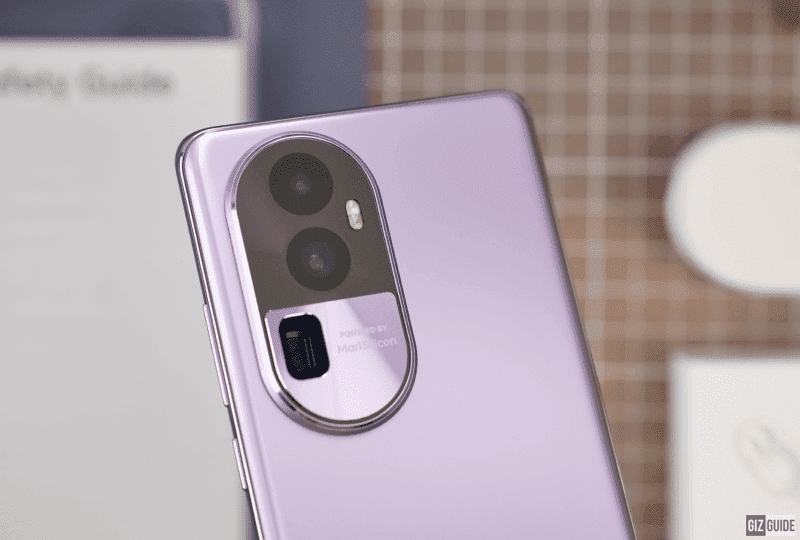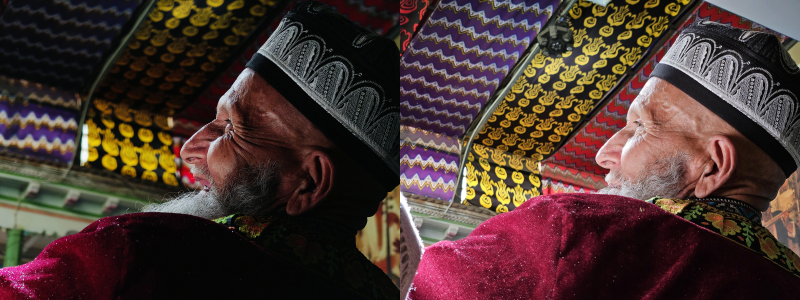 |
| File photo: The Reno10 Pro+ 5G's cameras |
OPPO highlights the Reno10 Pro+ 5G's photography features!
Today's smartphone users want more from their phones' cameras because the way we connect with one another has been revolutionized by the use of photos and videos. As a result, phone makers have been researching innovative ideas to develop strong and clever features that make anyone an expert photographer.
OPPO says they have been working hard to develop camera systems that can shoot clear, high-quality, and true-to-life images. These efforts range from hardware advancements in lens technology to highly advanced image processing algorithms.
In addition to this drive for innovation, OPPO has been firmly researching professional photography and working together with famous specialists from across the world in fields including portrait photography, lighting design, and post-production effects.
With ongoing collaborations with these specialists and collected data on the specific tone and style of their masterpieces, OPPO has discovered a series of insights that have led to the creation of its own timeless photography aesthetic which revolves around capturing the true relationship between light and shadow to the same standard as a professional grade camera.
Insert the OPPO Reno 10 Pro+ 5G which features 50MP f/1.8 IMX890 primary camera with All Pixel Omni-Direction PDAF + OIS and an 8MP f/2.2 Sony IMX355 112-degree ultra-wide-angle camera + 64MP f/2.5 OV64B 3x optical periscope zoom camera w/ PDAF, CDAF, and OIS + LED flash.
With this hardware, the brand claims they were able to create professional-level portrait photography experiences across the imaging chain such as image capture and processing to image display.
OPPO says many phone makers have introduced so-called image "optimization" or "beautification" effects intended to help the subject stand out by boosting their brightness and reducing brightness in the background due to the rapid increase in computational power available on smartphones. A careful look at each of these images reveals that they are far from being photographic masterpieces, despite the fact that this aggressive computational method can produce brighter, more eye-catching images that adhere to today's mainstream aesthetics.
 |
| Reno 10 Pro+ 5G versus Brand S |
In the above image, OPPO showed a side-by-side comparison with one featuring minimal processing to maintain natural light and shadow of the scene while the other one heavily uses algorithmic optimization. This shows that it's easy to spot the difference between the two methods used. Here, similar spatial and 3D textures are heavily compromised by aggressive algorithms, where the 3D contours of the person are compressed into a 2D flat surface.
OPPO continued that using smartphone image processing algorithms can make it easier to take nice pictures, but if you rely on them too much, they can also destroy a lot of the natural information in the image, especially when it comes to how light and shadow interact in pictures. As a result, the 3D world formed by natural light on a smartphone is reduced to a flat 2D depiction, creating a cookie-cutter appearance that makes each photograph appear more alike than unique. While such photographs may suit today's fashions, they lack the depth and true beauty of the exact scene.
OPPO also mentioned they aim to combine their collected deep knowledge of photography from experts with smart computational photography techniques to create an imaging system capable of reproducing the most natural light and shadow, space, and true-to-life colors.
They said they have 1,000 imaging specialists at the moment and an annual investment of more than 1 billion CNY (around PHP 7.7B) apart from collaborating with professional photographers, specialists, and engineers.
Another highlight would be the 64MP 1/2-inch telephoto sensor with 3x optical zoom, f/2.5 large aperture, and a minimum focusing range of 25cm. This offers more freedom of composition when using optical zoom with a 71mm equivalent focal length. Viewer attention can be brought to both the subject and the background by enhancing landscapes in the distance without magnifying the subject in the foreground. In case, more magnification is needed, the Reno10 Pro+ 5G also uses optical quality 6x zoom.
 |
| Using 6x zoom |
In addition to these capabilities, the lens has an ALD anti-reflective optical coating and a BG spin-coating technique to eliminate color glare and lens flare generated by complicated lighting, particularly point light sources.
Meanwhile, OPPO said that the Snapdragon 8+ Gen 1 processor also plays in image processing thanks to the help of multi-frame synthesis. Reno10 Pro+ 5G is able to conduct multi-frame synthesis in the RAW domain, rather than the lossy YUV domain, by devoting such a large number of processing resources to this operation, offering improvements to conditions such as low light HDR shots, portrait mode, and high-resolution digital zoom.
Reno10 Pro+ 5G achieves new breakthroughs in image clarity and color by improving processes such as AI denoising, AI demosaicing, and deep pixel compositing in the RAW domain. It can reproduce three-dimensional lighting in two-dimensional images to the finest detail possible by restoring the natural relationship between light and shadow in images.
 |
| Natural light and shadows |
OPPO also mentioned new updates on the phone's Portrait Mode such as the bokeh flare effect which produces a realistic level of bokeh, layering, and flare patterns based on the lighting and objects in a scene. With the aperture can be modified between f/1.4 to f/16, each portrait can be adjusted to get the adequate amount of bokeh and depth of field effect.
 |
| The portrait mode |
The phone maker explained that the portrait processing includes advanced keying algorithms that separate the subject image from the background layer with improved accuracy. As part of this, the precision of the AI algorithm has been enhanced through special training for portrait shooters allowing them to properly identify things like hand-held objects, gestures, and more.
 |
| Algorithm optimizations |
Furthermore, multi-semantic segmentation has been utilized to optimize detection accuracy for repetitive textures and other scenes, and edge feathering algorithms are used to improve the appearance of edges in the pictures based on the depth data gathered.
 |
| The phone's display |
OPPO also stated that screen display is similarly important in viewing photos. The Reno 10 Pro+ 5G boasts a 6.74-inch AGC Dragontrail Star 2 protected 3D curved 10-bit AMOLED screen with 120Hz refresh rate, 240Hz touch sampling rate, 1440Hz PWM dimming, HDR10+, 1.5K 2772 x 1240 x resolution at 451-pixel density, 1400 nits of peak brightness ensuring that the images you will view accurate as possible.
The brand expounds that to better display the light and shadow details captured, Reno 10 Pro+ 5G starts making preparations to display the image during the shooting phase itself.
Based on OPPO's research into the above 20 kinds of lighting—such as backlight, side light, top light bottom light, and mixed light sources—the phone maker has created a new image exposure method that changes the HDR fusion and tone mapping processes to bring new realism to the interaction between light and shadow.
It continued that during the shooting phase for every HDR photo, a frame of grayscale data with up to 12 million pixels is produced. Then the said image will be converted using the 4-in-1 pixel binning tech to generate a 3 million-pixel grayscale picture containing rich light and shadow information. OPPO calls this method ProXDR Smart Display Control, and it allows Reno10 Pro+ 5G to locally change screen brightness by up to 1100 nits when viewing HDR photos. The aforementioned ProXDR enhances the brightness of objects in the display, like the sky, city lights, or sunset over a hill by implementing a high-precision image recognition algorithm to automatically identify light sources in the grayscale image data. This results in up to 8 times more dynamic range than the regular SDR.
Meanwhile, OPPO introduces the Portrait Expert Project, the said project will take advantage of the knowledge from a group of portrait photographers, taking inspiration from their mastery of light and their multicultural perspectives to constantly refine the Reno series' main portrait technologies.
The brand further says that it will put together the inputs from the Portrait Expert Group, and seek feedback from its global users through the new OPPP imagine IF Photography Project, a platform created to help its users display their talents in photo and video technology.
What do you guys think?









Post a Comment